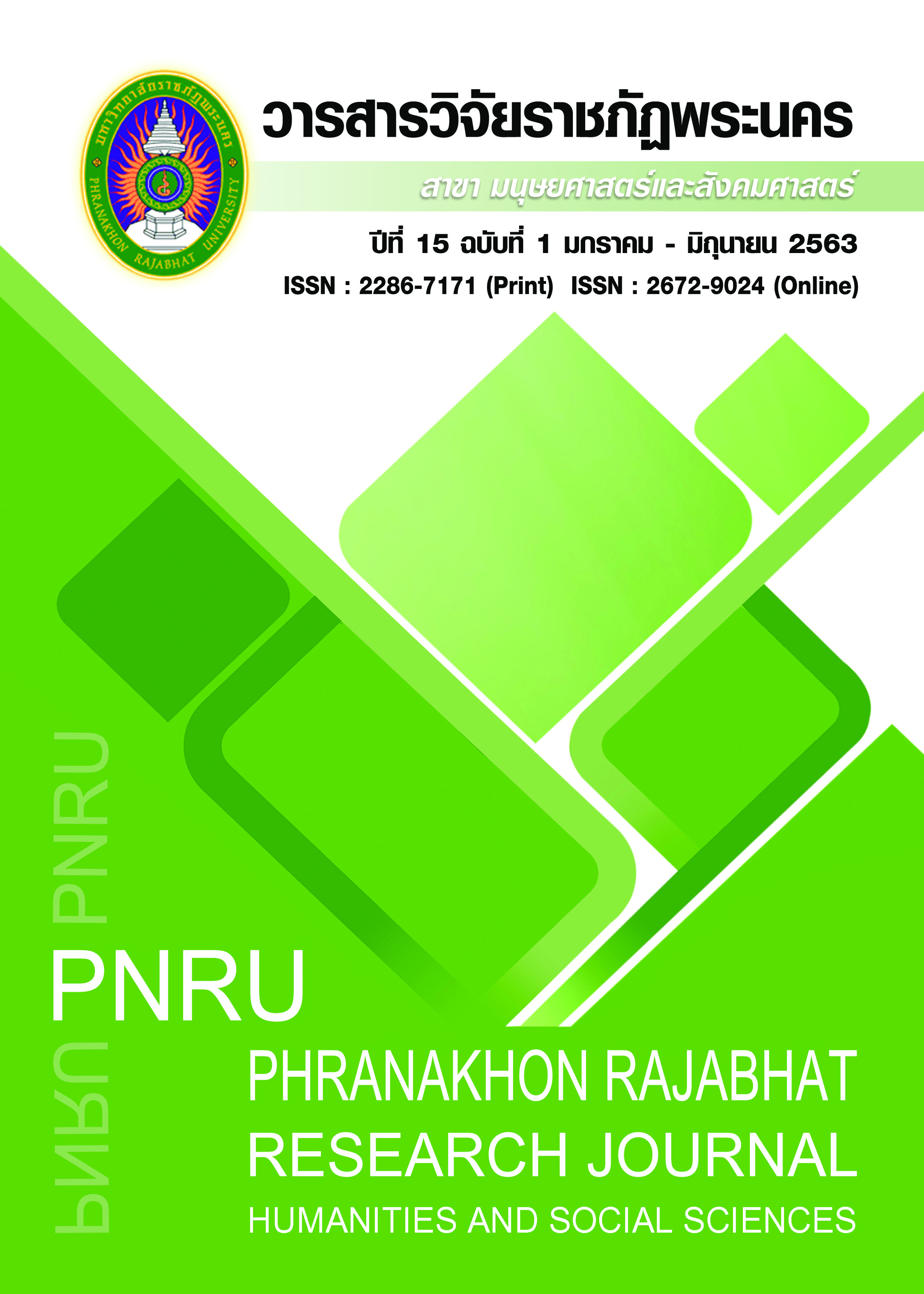THE MODEL OF PUBLIC PARTICIPATION IN SOCIAL DEVELOPMENT BASED ON THE PHILOSOPHY OF SUFFICIENCY ECONOMY AFFECTING PADDY FIELDS AND ROCK SALT FIELDS IN BAN DUNG DISTRICT, UDON THANI PROVINCE, THAILAND.
Main Article Content
Abstract
This research aimed to study and also analyzes public participation in resolving the problem of salt-water intrusion due to the rock salt field production and applies the sufficiency economy philosophy for everyday living. This research collected data by using questionnaires surveying 400 samples. According to the research results, Ban Dung District area has a long history going back 4,000 years the same as the Ban Chiang civilization. Formerly, it was an enormous forest with rubber trees, coconut trees, and many kinds of wild animals. Nowadays, there are salt fields in four districts consisting of Ban Dung District, Phon Sung District, Sri Sut Tho District, and Ban Chai District; the salt fields impacted Na Kham District, which is the “three waters” town. Most of the local people are farmers believing in Buddhism, living together for not less than 21 years. Therefore, when they needed to solve the problem of salt-water intrusion from rock salt field production, people actively participated and cooperated, especially in terms of acknowledgment, understanding, brainstorming, and sharing their opinions; however, they did not take any action. The operational participation is rated at the medium-to-low level. The personal and household operations in the activities based on the theory of sufficiency economy are estimated at a high level. Furthermore, they should find a significant mechanism to mobilize “3 collaborations, four pillars, nine integrations, and one foundation” model, which is the condition under the theory of sufficiency economy for moving onto the sustainably happy civil state community in Scenario Building. The factors affecting the participation in solving the problems are people aged 51 years and more, agricultural and farmer, the period of living in the area is 30 years and more, social group, Landlords and landowners in the area.
Article Details
Each publish articles were copyright by Phranakorn Rajabhat University
Any contents which appeared in each articles in the journal were authors personal opinion. It did not relate to Phranakorn Rajabhat University and other instructors in the university. Each authors would take responsibility on their articles. If there are any mistake, the authors will take responsibility themselves
References
Bhumibol Adulyadej, H.M. King. (2009). The guidance of His Majesty the King: The Royal guidance and Speeches on Sufficiency Economy. Pradabos Foundation. (8th edition). Bangkok: Bangkok Printing. (in Thai)
Phukamchanoad, P. (2012). The way of urban community life and livelihood based on sufficiency economy philosophy. Research of Suan Sunandha Rajabhat University. (in Thai)
Kaewnongyang, J. (1994). The economic analysis of production and external costs of the rock salt mining in Amphoe Bandung, Changwat Udon Thani. Unpublished Master’s Thesis, Faculty of Science (Agricultural Economics), Graduate School, Kasetsart University. (in Thai)
Office of the National Economic and Social Development Board. (2011). His Majesty the King Bhumibol Adulyadej and His Developmental programs. Bangkok: Petchrung Print Center. (in Thai)
Office of the National Economic and Social Development Board. (2008). From the sufficiency economy philosophy to the practice. Bangkok: Petchrung Print Center. (in Thai)
Khammun, S. et al. (2008). Social capital and human capital development. Annual Conference 2008 towards the Qualitative and Sustainable Growth, Group 3, Human Capital. 29-30 November 2008. Ambassador City Jomtien Hotel Chonburi. (in Thai)
Silpacharu, T. (2006). The research and statistical data analysis with SPSS. (5th edition). Bangkok: V. Inter Print. (in Thai)
Patumpong, T., Editor. (2005). The follow-up and resolution of the environmental problems affected by rock salt field and the viewpoint towards natural resources and environmental problems of the sub-district administrative organizations. Environmental News, Section 9, Vol 1/2005. Promotion and Broadcast Office. (in Thai)
Kunurat, P. & Yongvanit, S. (2002). The study of social and economic conditions and the effects of the community towards salt resources, saline soil, and saltwater in the upper northeast region under the research project on the salt resources, saline soil, and saltwater management in the upper northeast region. Khon Kaen: Khon Kaen University. (in Thai)
The Bureau of Registration Administration, Department of Provincial Administration. (2015). The number of populations and houses classified in each district and sub-district, Udon Thani Province on December 2010. Retrieved December 10, 2015, from http://service.nso.go.th/nso/nsopublish/districtList/page1.htm (in Thai)
Office of the Non-formal and Information Education, Ban Dung Sub-district (NFE). (2015). Map 13, Ban Dung Sub-district, Ban Dung District, Udon Thani. Retrieved December 10, 2015, from http://nfenakham.blogspot.com/2011/02/blog-post_7953.html (in Thai)
Yamane, T. (1973). Statistics: an introductory analysis. (3rd edition). Tokyo: Harper.


